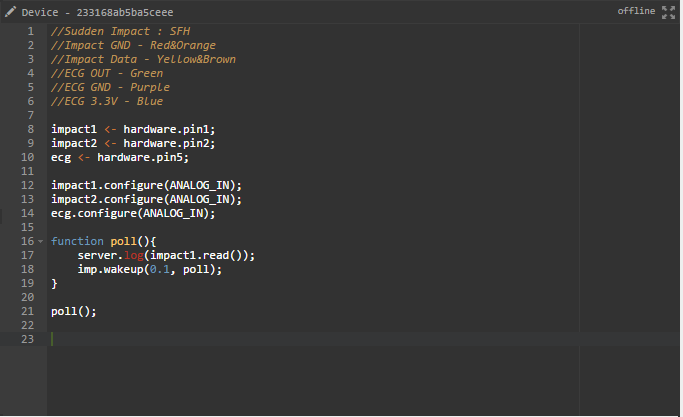Afternoon (or morning, or evening  ) to all of you fine folks today.
) to all of you fine folks today.
Two sections to this short blog post today, so have a short and simple read.
Since I started working on SFH, I am amazed at what I have learned. I have already accomplished far more than I initially thought I would and I definitely have more to learn. In the meantime however, on with the blog post!
Physical Changes
Since the Electric Imp arrived on my doorstep I have been busy working on getting components ready for connection.
A key design consideration I took into account when working on this was that the components should be readily capable of being connected to a breadboard, or directly to the Imp's headers. I will highlight below how I did this.
Pictured above is one of the Impact monitoring leads. This was fabricated from a Piezoelectric element, a few lengths of wire and some altered jumper cables.
The wire was measured to a long length, and can be zip-tied down to a smaller length as the height of the athlete decreases. On the other end of the wire is a cut and stripped jumper cable, so the female end is on one side and bare wire on the other. A question I was asked while doing this was "Why go through the extra effort of soldering half of a jumper cable, when it can be soldered directly to the headers on the Electric Imp?
The answer to this was for two reasons. One, as our good friend Ben Heck says, "always build something you can take apart easily later". Two, was that with a standard Male-Male Jumper cable attached, it can easily become breadboard capable, which is what is pictured above as the "Male-Female Connection".
Pictured above is the Analog Devices AD8232 Heart Rate evaluation module. In this case, I have soldered wires in the exact same method as for the Impact sensors. Note in this picture, only Data (OUT), 3.3V and GND is attached. Later in the project the electrode pins will be soldered to a 3.5mm 3-pole audio jack, for connection to the electrodes.
Software Changes
Pictured above is some simple code I wrote. This configures three pins for analog input, in this case, the two impact sensors and the ECG module.
In this example it also prints out the reading of the first impact sensor to the console. I later plan to adjust this to constantly take readings and push them to the server.
That said - the server setup has changed. The old websockets implementation is being ditched for a custom logging system in PHP. Stay tuned for that one next week 
As I say, not much to report today but slow and steady progress is being made.




Top Comments